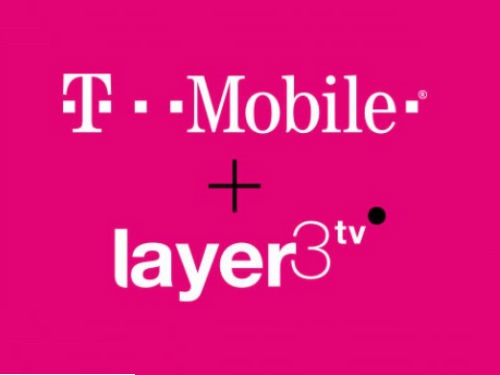T-Mobile Expects ‘Quick Payback’ on Layer3 TV Deal, OTT TV Play

If you're an investor that's concerned about what T-Mobile is spending to launch its own OTT TV service following its acquisition of Denver-based Layer3 TV, don’t be.
RELATED: T-Mobile Closes Layer3 TV Acquisition
At least that appears to be the message from Braxton Carter, T-Mobile’s CFO, during a talk Wednesday at the Morgan Stanley Technology, Media & Telecom Conference.
T-Mobile acquired Layer3 TV for about $325 million, and the total cash burn for all R&D and investment as it steps toward a product launch later this year is about $150 million, and already embedded in T-Mobile’s guidance, he said.
“To me every dollar counts…but relative to the cash generation of the business we think that there’s going to be a fairly quick pay back on it,” Carter said.
And T-Mobile, he admitted, is being tight-lipped – for competitive reasons -- about exactly what the company has in mind for an OTT TV product that, it believes, will stir things up in pay TV much as T-Mobile did in mobile.
“We think that if there’s an industry that’s ripe for disruption, it’s the cable industry,” he said.
Multichannel Newsletter
The smarter way to stay on top of the multichannel video marketplace. Sign up below.
Carter reiterated that part of the plan is to more tightly integrate the smartphone and the TV experience, while acknowledging that some of the new OTT TV players are already doing some of that.
“We’re talking about doing something very differently,” Carter said, noting that the plan is not to head into the market and compete in the way that MSOs such as Charter Communications and Comcast do business.
He said there’s some “interesting synergies” and enhancements that T-Mobile can bring to its core offerings with Layer3 TV.
Given the costs of content, what remains to be seen is whether T-Mobile can create a service that not only attracts customers but also generates a sizable profit – a combo that the current crop of virtual MVPDs are struggling to pull together.
Earlier today, MoffettNathanson analyst Craig Moffett issued a report noting that while virtual MVPDs are growing “like weeds,” the OTT TV business remains a “truly lousy” one.
RELATED: Virtual MVPDs Growing ‘Like Weeds’: Analyst
5G Update
Carter also expanded a bit on T-Mobile’s plans for 5G, following up on the company’s announced plans to deploy a mobile 5G network in 30 markets by year-end.
RELATED: T-Mobile Going Big on Mobile 5G
While not completely discounting some of the “noise” about early, pre-standard use cases for fixed wireless, he said T-Mobile’s vision is about a “truly ubiquitous, mobile network that is 5G-capable and enabled…That’s where we think the real power is.”
But he did have some criticism to share about plans by rivals such as Verizon and AT&T to push ahead with pre-standard, fixed wireless products.
“When you go non-standard, you pay for R&D, not much of a base to amortize over and when standards come out, it’s a rip-and-replace,” he said. “It’s extremely inefficient.”
T-Mobile is pushing equipment makers to create dual-band radios that are 5G-cmpatibble that can be upgraded with software once the standards are defined.
A good part of T-Mobile’s 5G rollout is tied to its 600 MHz build, which provides wide coverage, but the company also sees opportunities to couple that with millimeter wave spectrum that is more useful over short ranges in in high-density markets.
“It’s going to be a multi-band situation” with 5G, he said, but added that use of mid-band spectrum for 5G is “really the golden goose.”
